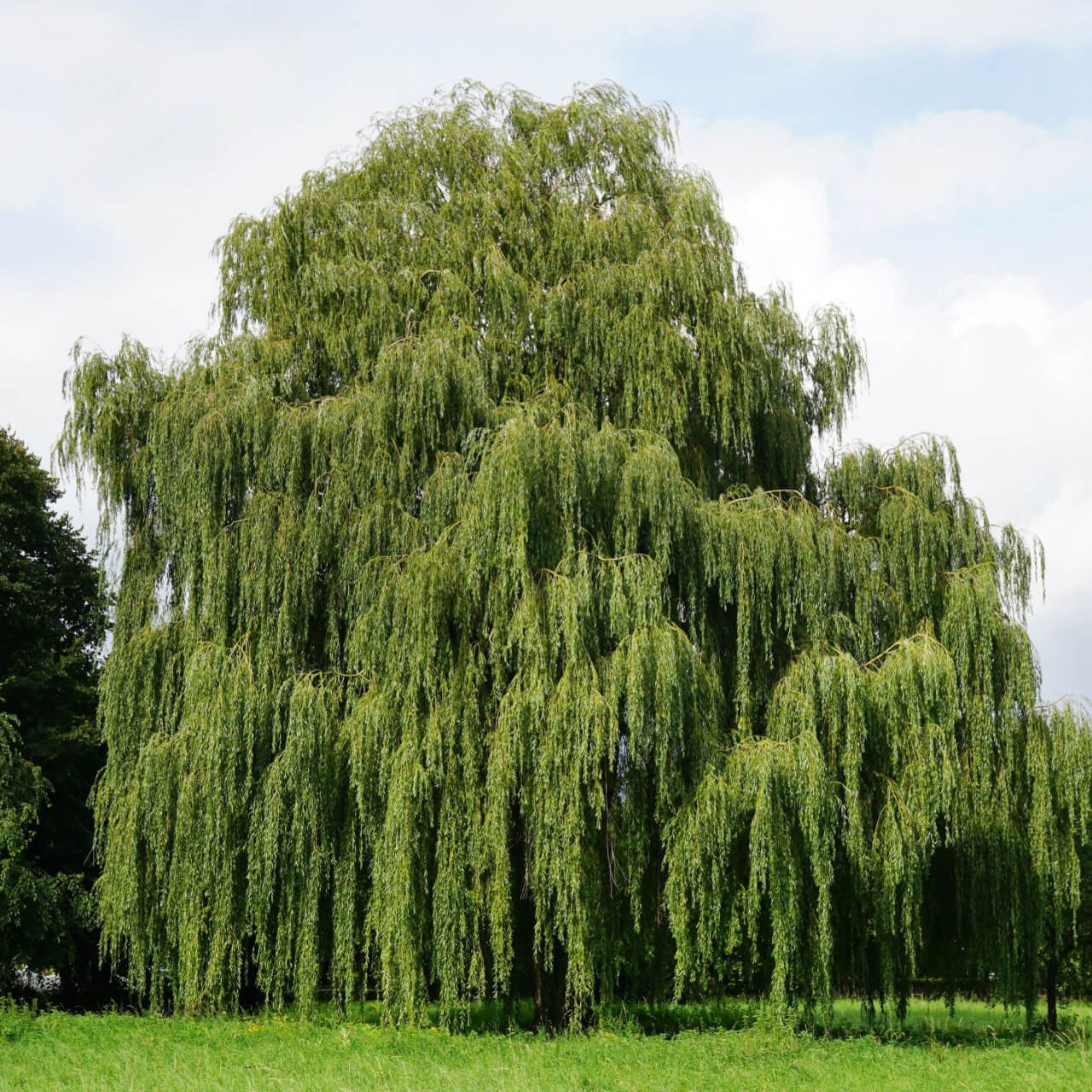



Weeping Willow
Shipping Information:
NowWe sell bare root plants - click here to see what you'll receive
Weeping Willow: Salix babylonica
The Weeping Willow (Salix babylonica) is an ancient tree of the senses admired for its thin, slender limbs and glossy leaves. This tree grows rapidly and is ideal for creating an idyllic garden or making a statement in any landscape.
Planting and Maintenance of Weeping Willow Trees
These fast-growing trees are easy to plant and grow, making them ideal for beginners and experienced gardeners. They like a well-drained, wet environment and can live in full sun or partial shade. Place the root ball in a hole twice its size, plant the tree, and fill it with soil and water. Once planted, they require very little care other than watering when the weather is dry and occasional pruning to shape or remove dead branches.
Seasonal Beauty and Color Changes Of The Weeping Willow
They are visually stimulating year-round. The delicate yellow-green flowers bloom in the spring. During the summer, the tree’s graceful, sloping canopy is lined with glossy green leaves, providing cool shade. The leaves turn golden-yellow in the fall and fall slowly off, keeping the classy branching design on display all winter.
Shape and Longevity
The tree is renowned for its familiar cascading form, with limbs falling straight to the ground. They develop quickly, growing to 30-50 feet high and equally wide. If treated well, these trees will survive for many decades as a beloved landscape addition.
Life History of Salix babylonica Trees
TN Nursery grows all types of trees, including the weeping willow, and transports them as fresh, ready-to-plant plants. These trees grow quickly, providing fast-growing trees, stunning beauty year-round and a permanent, quiet presence in your landscape. Add one to your garden today for grace and peace!
| Planting zone | [4, 5, 6, 7, 8, 9] |
|---|---|
| Height At Maturity | Over 25 Feet |






Weeping Willow
Shipping Information:
Now| Planting zone | [4, 5, 6, 7, 8, 9] |
|---|---|
| Height At Maturity | Over 25 Feet |

